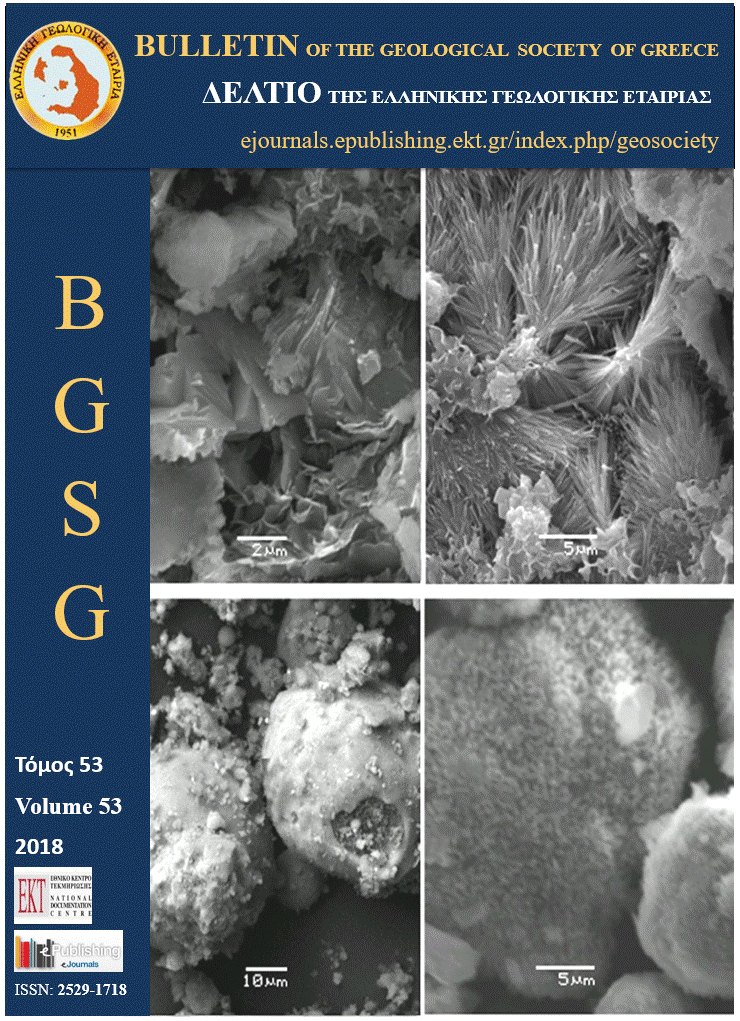An integrated approach to the coal deposits in the Mesohellenic Trough, Greece
Résumé
A considerable amount of coal deposits occur within the Mesohellenic Trough in Greece. It is considered as the largest and most important basin of the last orogenic stage of the Hellenides, which is interpreted as a back-arc basin that evolved during the period of Late Oligocene to Miocene. In this study, a simplified geological map has been constructed emphasizing on the coal formation occurrences of the Mesohellenic Trough. This work has been accomplished, through Geographic Information Systems (GIS) and has been organized via geodatabase as GIS data files (feature classes). For the creation of the geological map suitable homogenization and discrete representation has been implemented different geological sheets, original source and traditional maps. Next step was the geostatistical analysis using polygonal methods linked to the corresponding tabular information. Regarding the stratigraphical age, and petrographic data related to geographic distribution of the coal occurrences, these are divided into three categories: Oligocene, Middle Miocene and Upper Miocene coals, exhibiting various physicochemical and topological properties. Upper Miocene coal exhibits the greatest area and perimeter values, while the lowest values correspond to those of the Middle Miocene. Terrain models such as aspect (angle-direction) and hillshade (shaded relief) showed the spatial relation between coal occurrences and morphotectonic as long as geometrical characteristics of the study area. Coals are mainly classified as huminites including mainly huminite group minerals (90%). Their S contents can probably derive from parent plant material or a combination of parent plant material with seawater sulfates. Moisture contents are strongly connected with the sustainability of the coal use in the energy production, while their carbonation grade is strongly associated with their age and expressed by their reflectivity values. All these data have been inserted in an integrated database and can be useful for pre-mining or post mining activities (e.g. planning, analysis, management, restoration). Results of this study are available for the effective evaluation of the existing coal occurrences, which can be used with renewable energy sources providing sustainable solutions, in combination with the upcoming innovative CCS and CCU technologies. Results also showed that coals from the Mesohellenic Trough present excellent quality traits. However, their value as combustible coal is very low due to the absence of economically recoverable reserves. The largest coal lenticular bodies have been extracted in the past and the remaining occurrences do not exceed several thousand tones. Based upon existing literature and from geospatial estimations, coal deposits in the Mesohellenic Trough Basin cannot be considered as economically valuable for exploitation.
Article Details
- Comment citer
-
Koukouzas, N., Krassakis, P., Koutsovitis, P., & Karkalis, C. (2019). An integrated approach to the coal deposits in the Mesohellenic Trough, Greece. Bulletin of the Geological Society of Greece, 54(1), 34–59. https://doi.org/10.12681/bgsg.19352
- Rubrique
- Mineralogy-Petrology-Geochemistry-Economic Geology

Ce travail est disponible sous licence Creative Commons Attribution - Pas d’Utilisation Commerciale 4.0 International.
Authors who publish with this journal agree to the following terms:
Authors retain copyright and grant the journal right of first publication with the work simultaneously licensed under a Creative Commons Attribution Non-Commercial License that allows others to share the work with an acknowledgement of the work's authorship and initial publication in this journal.
Authors are able to enter into separate, additional contractual arrangements for the non-exclusive distribution of the journal's published version of the work (e.g. post it to an institutional repository or publish it in a book), with an acknowledgement of its initial publication in this journal. Authors are permitted and encouraged to post their work online (preferably in institutional repositories or on their website) prior to and during the submission process, as it can lead to productive exchanges, as well as earlier and greater citation of published work.





